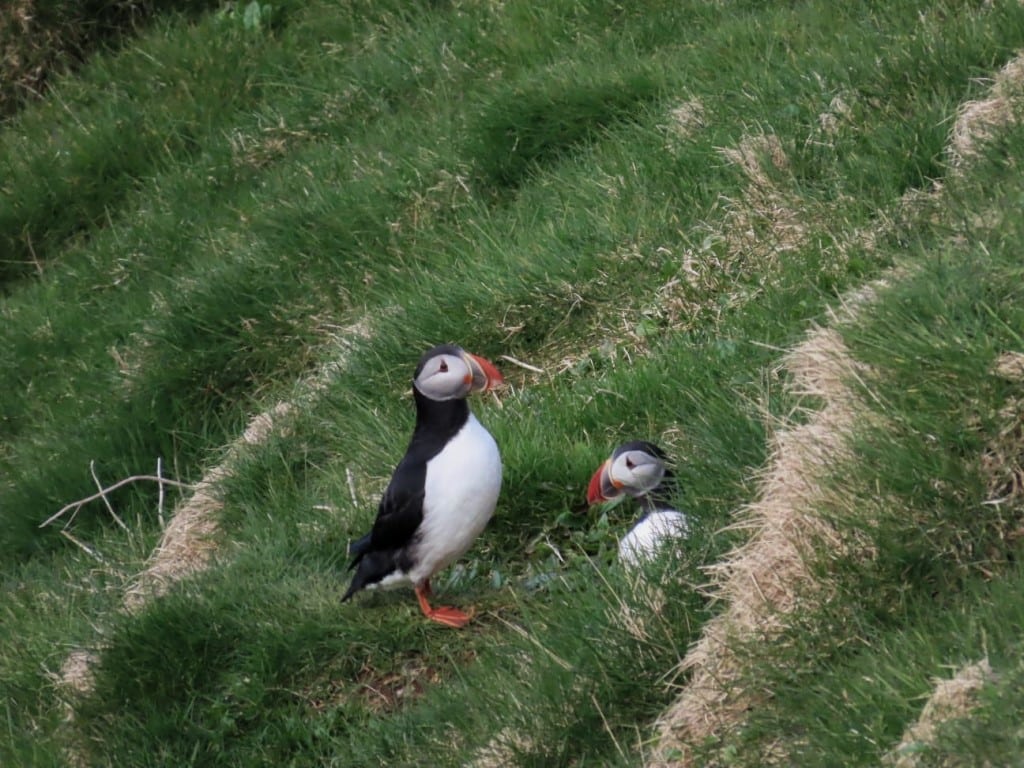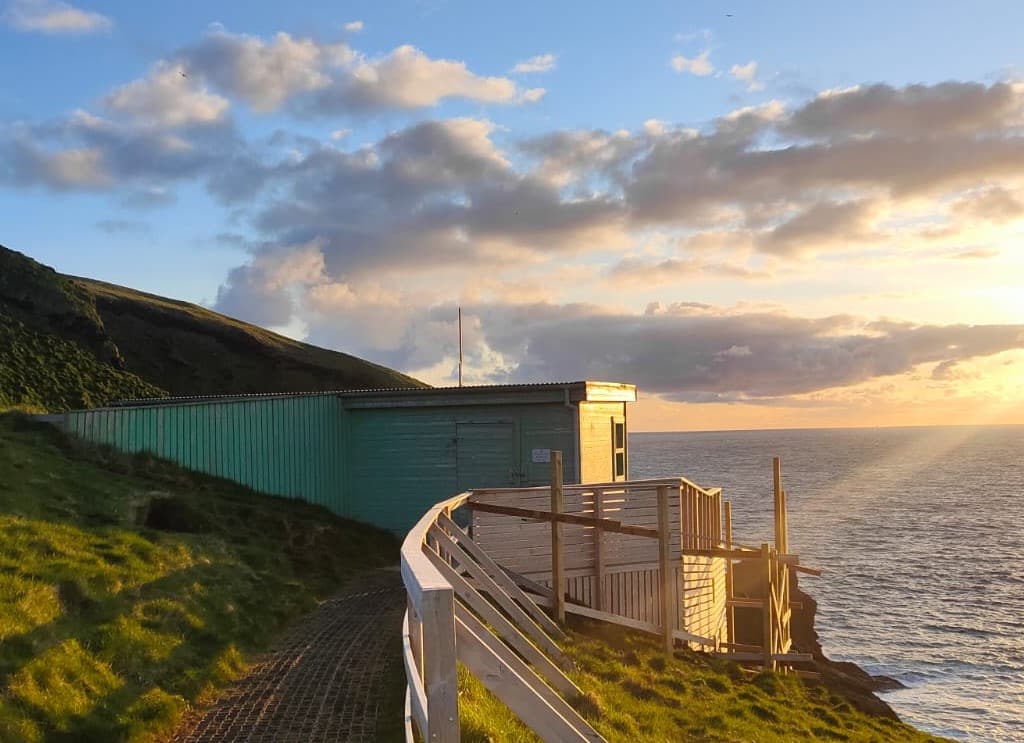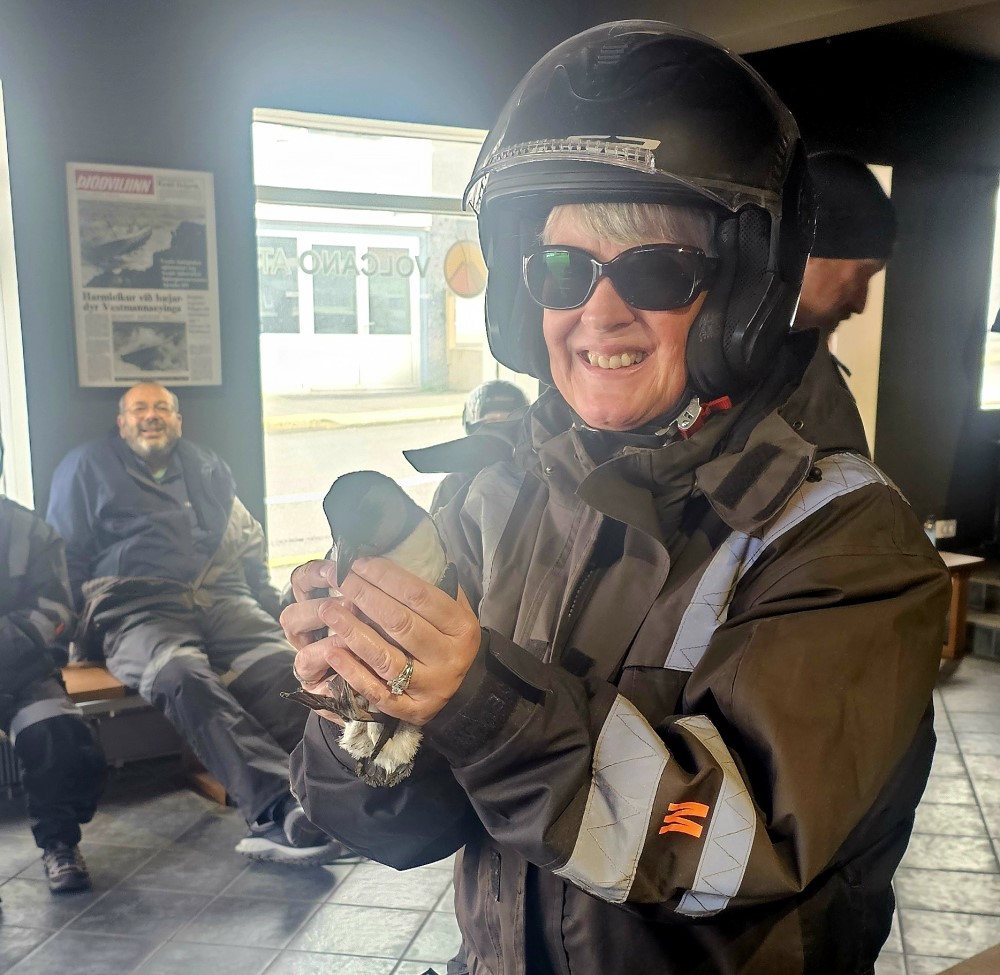The Ultimate Guide to Puffins in the Westman Islands
Puffins are a big draw for anyone planning to be in Iceland during the summer months. As much as 60% of the world’s Atlantic puffin population can be found in Iceland and the Westman Islands boasts the largest colony. In short, if you’re keen to see puffins during your summer holiday, this is probably your best shot, which is why we love to offer a puffin-themed ATV tour of Heimaey.
A bit about puffins in Iceland
Atlantic puffins are migratory birds, returning to the same place each year to nest in burrows and rear their chicks, which are called pufflings. They have a lifespan of approximately 12 years on average but can live to well over 30. That colourful beak for which they are so famous is a summer thing, regrown to attract a mate.
Puffins don’t start breeding until they are at least five years old, when they are monogamous and lay a single egg each year. The male and female share the duties; while the male digs the burrow, they both source fish and look after the egg until it hatches. They look after the puffling for 42 days, though if food is scarce and the chick hasn’t grown sufficiently, this can be longer.
The birds have small wings in proportion to the size of their body, so they characteristically flap their wings exceptionally fast to be able to remain airborne. They’re good divers, flying back and forth to the ocean to look for small fish such as capelin to bring back for their young.

Where can you see puffins in the Westman Islands?
Probably the best place to encounter puffins on Heimaey is at the bird hide at Stórhöfði. This is the peninsula at the southern end of the island and this well-positioned hide gives you a close up view of the birds as they come and go from the cliff top burrows. It’s a few minutes’ drive from the harbour but also within walking distance if you’ve plenty of time on your hands. We call in here on our ATV tours.
Heimaklettur and other headlands are another possibility, whether during a hike or from the bottom during a boat trip. If you’re planning to walk, bear in mind that you’ll need a good head for heights. The trails can be steep and slippery, so you won’t want to chance them if the weather is blustery or rainy. Pick a fine day to be safe.
If you book a spot on a boat trip, this will take you around the island and close to the edge of the cliffs that drop into the ocean. You’ll often have the opportunity to see them as they fly over the water as well as make landfall, but even when the captain cuts the engines you may still only see them fleetingly and from a distance.

When is the best time to see puffins in the Westman Islands?
As with anywhere in Iceland, there’s only one time to see the puffins at close quarters and that’s when they arrive to nest and breed. Though the exact dates vary from year to year, typically they arrive on Heimaey’s shores sometime in April and depart en masse back to the Atlantic around the middle of August.
Puffins spend the rest of the year far out to sea, so even on boat trips you won’t spot them on the rocky cliffs where other seabirds might perch. The best you can hope for is to head down to the SeaLife Trust near the harbour, the place where the two rescued beluga whales are cared for. The sanctuary is open seasonally, from mid February to mid November, meaning you have a few extra months to play with.
There, you can also visit a small number of puffins that aren’t able to be released back into the wild. Some of these birds have vision impairment which would make it impossible for them to successfully hunt for food; others have long-term injuries to their legs which again means that they would not thrive without human assistance.
The puffling parade
If you plan to be in the Westman Islands in August or even September, you might consider participating in the puffling parade. This longstanding tradition helps to ensure that disoriented puffin chicks make it safely to the ocean. Pufflings spend the first few months of their life in cliffside burrows where their parents bring them food and look after them while they are too young to fend for themselves.
When they are a few months old, it’s time for the chicks to fledge and follow the adults back out to sea, where they customarily spend the winter months. Unfortunately, some of the pufflings get a bit confused and follow the lights of Heimaey town rather than head in the opposite direction towards open water. Some even experience bruising landings on the hard tarmac of roads and pavements.
These birds need a little help to begin their life’s journey and so residents of Heimaey spend their evenings rounding up the stragglers. They take them back to their homes for the night and, if all goes well, release them from the island’s cliff tops the following morning. A few need specialist care at the sanctuary beside the harbour but most make it in the end. Visitors are welcome to join in.

How to photograph puffins
You’re probably keen to get some snaps of puffins, even if it’s just with your smartphone. We have a few tips to help improve your images. Firstly, if you intend to capture a bird in flight, then to make sure the shot is sharp and in focus, you’ll need to select a fast shutter speed to freeze the action. Puffins flap their wings on average about 400 times per minute, so you can imagine how fast that is.
As they approach the cliff face, they sometimes make clumsy landings which can be fun to photograph. If you’re lucky you might also get to photograph a close up of a puffin whose beak is full of fish. Try to position yourself so that you can capture both orange feet in the shot as this will balance the brightly coloured beak. Depending on the angle, you might also be able to achieve eye contact with the lens.
Patience is key. You’ll get the best results if you are able to spend more time in a bird hide. While you might get a few snatched shots during a boat trip, being able to set up a tripod on land you’ll benefit from the solid foundation to minimise camera shake. Having a shutter release also helps to keep things steady and stops your arm aching as much while you take multiple shots.
Is it better to take a tour or visit independently?
Why choose? It’s possible to do both! We’d suggest booking one of our ATV tours so that you can learn a bit about puffin locations and puffin behaviour from our guide while having an adventure exploring the island on our fun ATVs. You’ll get a feel for what different parts of the island are like for viewing puffins so that you can choose which to return to on your own later on during your trip.